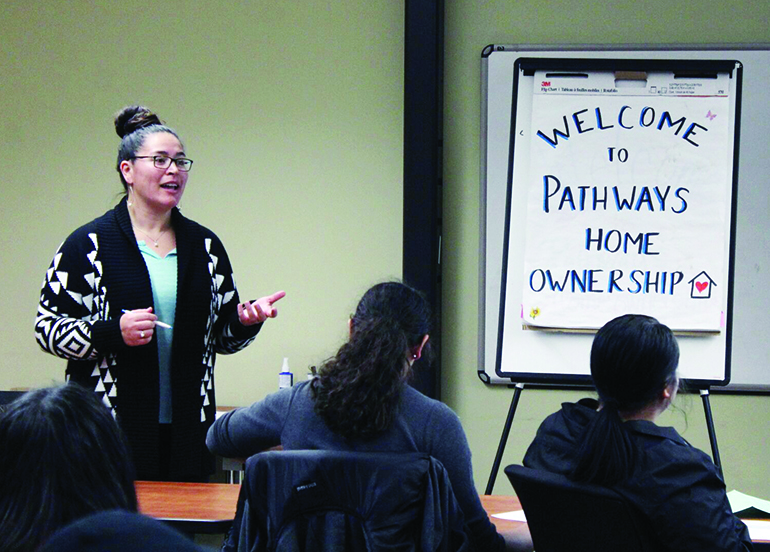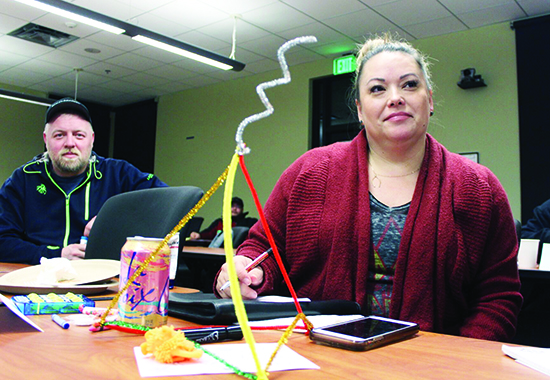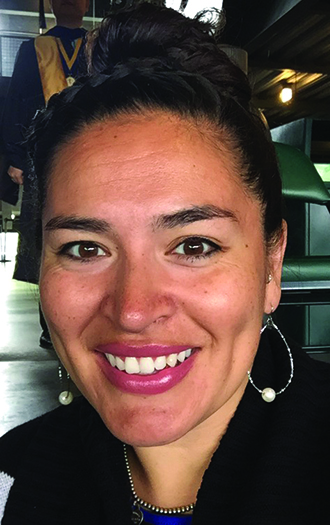Tulalip Tribes and 1st Tribal Lending partner to teach about 184 loans and how to buy a house

By Kalvin Valdillez, Tulalip News
“Housing isn’t new to us,” stated Tulalip tribal member and 1st Tribal Lending Outreach Spokeswoman, Darkfeather Ancheta, to a full classroom at the Tulalip Administration Building. “We’ve had longhouses and smokehouses for years. We’ve grown and can’t all fit into longhouses anymore. Housing isn’t new to us, credit is new, income is new. The times have changed, we didn’t have to worry about those types of things back then.”
The Tulalip Tribes Leasing department recently partnered with Darkfeather and 1st Tribal Lending to bring Native Homeownership: The Guide to Buying a Home, a three-part, seven and a half-hour class, to the tribal members of the Tulalip community. The classes are held throughout the year to help prepare and provide education to tribal members who are interested in purchasing a home of their own. Now in its second year, word about the course is spreading throughout the community as the most recent class, on the evening of February 27, saw their largest attendance of nearly fifty Tulalip citizens.
In 1992, the Section 184 Indian Home Loan Guarantee Program, designed for federally recognized tribal members, was established through U.S. Housing and Urban Development (HUD). The loan program guarantees that Indigenous borrowers from across the nation get into homes with lower down payments as well as lower and fixed interest rates, compared to standard bank loans. The loan can be used for the purchase of a home on the reservation as well as designated areas off of the reservation. 1st Tribal Lending is an administer of the Section 184 Loan and by enlisting Darkfeather to instruct the course, tribal members get an in-depth look at the process of the loan. Although there is no minimum credit score requirement, 184 does require your credit to be relatively clean. Meaning no outstanding collection items and no charge-offs, as well as a few other requirements. If a future homeowner shows delinquencies on their credit score, Darkfeather can discuss ways to improve and remove items from their credit.
“The 184 loan is specifically for tribal members,” says Darkfeather. “We can use it for purchasing, remodeling, purchase plus remodel and building for homes on and off the reservation. The way that tribal members qualify is based off credit history and income. I can help them with their credit. When they take this class, we can pull their credit for them for free. We can go over it, I can help them understand what’s good, what’s bad and where their situation is.”
Tulalip tribal members who successfully complete the course are also eligible for the Down Payment Assistance Program in which Tulalip provides the down payment of the 184 loans for their members, up to $5000.00 depending on the amount of the loan.
“I want to buy a home, I’m sick of renting,” expressed Tulalip tribal member Sydney Napeahi. “I’m interested in learning about the loans I can get and what I can do to qualify, what the next steps are if I’m already qualified and how quickly I can get into a home.”
“The Native homeownership [course] helps get tribal members ready,” says Darkfeather. “For me it’s about the education. Knowledge is power. If they can learn about it, prepare and get ready for it, when they find their dream home they’ll know what to do to get into that home. Nobody wants to be told they’re denied, so hopefully with this class they can gain that knowledge to get their dream home.”
Current Native Homeownership students will complete their final class on March 13, and will be all the more closer to stepping through the front door of a home to call their own. Native Homeownership: The Guide to Buying a Home will be held twice more during this year, so be on the lookout for future dates and be sure to RSVP ASAP to reserve your seat in the class. For further details, please contact the Tulalip Leasing Department at (360) 716-4818 or e-mail Darkfeather Ancheta at Darkfeather@1tribal.com

